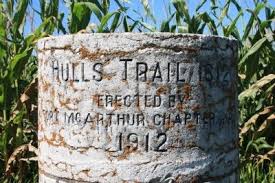A Step Back in Time: The Remarkable History of Hull’s Trace Corduroy Road
Downriver Beat
Archives
A Step Back in Time: The Remarkable History of Hull’s Trace Corduroy Road
SIGN UP FOR OUR NEWSLETTER
A Step Back in Time: The Remarkable History of Hull’s Trace Corduroy Road |
Exploring Michigan's Oldest Road Remnant in Brownstown Township |
Along the banks of the Huron River in Brownstown Township lies a significant piece of American history—the Hull’s Trace North Huron River Corduroy Segment, recognized as Michigan’s oldest known road remnant.
This preserved stretch of corduroy road, constructed from logs laid side by side, dates back to 1812 during the War of 1812.
General William Hull commissioned this military supply route to connect Fort Detroit with supply depots in Ohio.
Soldiers felled nearby trees to create a passable road through Michigan’s challenging swampy terrain, facilitating the movement of troops and supplies.
While much of the original 200-mile route has vanished over time, a segment near the Huron River survived beneath layers of soil and water.
In 2000, during road construction, workers rediscovered this section, revealing logs that had remained intact for over two centuries.
Today, this rare archaeological site is protected by the National Park Service as part of the River Raisin National Battlefield Park.
Visitors can view the exposed logs along the riverbank, offering a tangible connection to the past.
Standing there, one can imagine the soldiers laboring through the wilderness, building the nation’s first military road in Michigan.
Hull’s Trace Corduroy Road stands as a testament to the perseverance and ingenuity of early American forces, serving as a wooden reminder of the grit that helped shape Michigan’s landscape and America’s frontier history. |

